World Gold Council: Gold could increase up to 15% in the second half of the year, price drop unlikely
In the GoldMid-Year Outlook 2025 Report released on July 15, 2025, the World Gold Council (WGC) said that in the first half of this year, gold increased by 26% in USD terms. A weak USD, flat interest rates and an unstable economic and geopolitical environment have strongly boosted investment demand for gold.
 |
Commenting on the gold price outlook for the second half of the year, WGC gave 3 scenarios.
According to the baseline scenario, gold prices will remain flat in the second half of the year, with a maximum price increase of 5% assuming current economic and market forecasts are accurate and macroeconomic conditions are stable.
In a scenario of a weakening economy, rising stagflationary pressures, escalating geopolitical tensions, and increased demand for safe haven gold, gold prices will increase by 10-15% in the second half of the year.
On the contrary, in the scenario where global conflicts are resolved, gold prices will fall by 12-17%. However, WGC believes that this possibility is unlikely to happen in the current context.
A WGC survey of 73 central banks found that about 95% believe that countries will continue to increase their gold holdings in the coming year, with domestic gold sources being seen as a strategic option to achieve this goal.
Instead of importing gold, which costs a lot of foreign currency, many countries are turning to buying gold directly from domestic mines. According to the WGC, 19 of the 36 central banks surveyed are buying gold directly from small and artisanal mines in their own currencies. Another four banks are considering this option.
WGC experts believe that this approach is both cost-effective and helps reduce pressure on foreign exchange reserves, helping to increase national reserves without having to spend foreign currency, while supporting the development of the domestic gold mining industry. In addition, it creates domestic jobs and increases budget revenue.
While countries like the Philippines and Ecuador have been doing this for years, a growing number of other central banks have begun to increase or are considering buying gold directly from local markets, according to the WGC report. The number of central banks surveyed that are buying gold directly from domestic mines has increased significantly since last year (only 14 of 57 central banks surveyed in 2024 are buying gold domestically).
“We are seeing a growing trend in African and Latin American countries where small-scale gold mines have thrived due to high gold prices and central banks are using this supply to build reserves,” said Shaokai Fan, global head of central banks at WGC. “Central banks in Colombia, Tanzania, Ghana, Zambia, Mongolia and the Philippines are now using domestic gold to build their national reserves.”
In Ghana alone, the National Gold Authority has signed agreements with several mining companies requiring them to sell 20% of their output to the central bank. Similarly, from September 2024, the Tanzanian government has also issued regulations requiring gold mining and exporting companies to retain at least 20% of their output to sell to the country's central bank.
"Unleash" the gold market
The deadline for the State Bank of Vietnam (SBV) to submit the Draft Decree amending Decree 24/2012/ND-CP on gold trading management to the Prime Minister has passed (July 15). Enterprises and credit institutions expect the amended decree to be issued soon, "unleashing" the gold market.
Does increased supply boost investment demand?
One of the important amendments proposed by the Draft Decree is to abolish the monopoly on gold bars and the monopoly on importing raw gold. Accordingly, enterprises and credit institutions that meet the conditions are allowed to import and produce gold bars.
According to the explanation of the State Bank, the annual gold import limit will be balanced by this agency based on the macroeconomic situation, monetary policy management goals, national foreign exchange reserves and the import and export situation of gold bars and raw gold.
Sharing with reporters, Dr. Nguyen Minh Phong, an economic expert, said that allowing the import of raw gold is necessary. In fact, gold import is not only to serve the need for gold bar production, but also to serve the production of gold jewelry, aiming for export.
“Thailand’s jewelry exports reached over 2 billion USD 20 years ago and nearly 9 billion USD in 2023. The level and capacity of Vietnamese businesses and goldsmiths are not inferior. However, for a long time, Vietnam’s gold jewelry industry has been unable to import raw materials for production, so allowing the import of raw gold for production is extremely necessary,” said Mr. Phong.
Sharing the same view, Dr. Nguyen Tri Hieu, Director of the Institute for Research on Development of Global Financial and Real Estate Markets, affirmed that increasing the supply of gold will "untie" businesses.
Increasing the gold supply may cause people to invest more money in gold, even creating a fever at times when the world gold price increases sharply. However, in the long term, according to Mr. Hieu, removing the monopoly and allowing the import of raw gold will help the market become more competitive and stable. In addition, increasing the gold supply will also help domestic gold prices cool down, reducing the difference with world gold prices. At the same time, when gold is no longer scarce, the speculative and hoarding mentality of many people will decrease.
The draft amended Decree also enhances transparency in gold transactions (identifying the identity of gold buyers; transactions of 20 million VND or more must be transferred; mandatory recording of gold bar serial numbers on documents...). This will help verify the origin of gold transactions, limiting money laundering and corruption through gold.
Be careful with gold floors
Commenting on the Draft Amended Decree, the Gold Business Association recommended that the State Bank research and develop a legal corridor and roadmap to allow the deployment of additional products to support market liquidity such as gold futures, gold certificates, and the national gold exchange...
 |
According to Mr. Huynh Trung Khanh, Senior Advisor of the World Gold Council (WGC) in Singapore, Indonesia, Thailand and Vietnam, establishing a national gold trading floor will quickly reduce the gap between domestic and world gold prices. For a country with a large gold consumption like Vietnam, this is necessary.
However, Mr. Nguyen Minh Phong said that setting up a gold exchange must be extremely careful, because Vietnam has learned a valuable lesson. If not well controlled, a gold exchange can lead to excessive speculation, causing macroeconomic instability, especially making it difficult to control exchange rates.
For his part, Mr. Nguyen Tri Hieu commented that the gold exchange will help transactions become more transparent, prices will be updated in real time, in line with fluctuations in world gold prices. However, if a gold exchange is established, it should only be a commodity gold exchange, and should not allow trading in gold certificates because of the high risk.
It is known that in the Draft Decree Amendment, the drafting agency did not mention the gold exchange. The State Bank said that after the decree is issued, the State Bank will review and amend and supplement related regulations to create a basis for commercial banks to provide gold derivative products.
When using derivative instruments, enterprises will perform accounting according to the regulations of the Ministry of Finance in Circular 210/2009/TT-BTC, guiding the application of International Accounting Standards on financial statement presentation and information disclosure for financial instruments in Vietnam.
The State Bank will also coordinate with relevant agencies to consider adding gold to the list of commodities allowed to be traded at the Commodity Exchange, according to the provisions of Decree 158/2006/ND-CP dated December 28, 2006 of the Government (as amended and supplemented). Gold trading activities on accounts will also be studied and guided along with the formation of a centralized Gold Exchange.
The Vietnam Gold Business Association has proposed that the State Bank of Vietnam study the form of mobilizing/lending gold. Some banks such as Agribank and BIDV have proposed allowing credit institutions to issue Gold Ownership Certificates to customers without having to conduct physical gold transactions. Gold delivery and receipt can be carried out in the future according to the agreement between the credit institution and the customer and is clearly stated on the seal/certificate.
However, according to experts, the State Bank will not allow gold mobilization and lending because this means "gold-izing" the economy.
Regarding gold custody services, the State Bank said it has received comments and will study and issue guidelines, including amending and supplementing Circular 02/2016/TT-NHNN dated February 26, 2016 on asset custody services, safe deposit box and safe deposit box rental of credit institutions.
Credit growth, banks report impressive profits
Many banks announced their second quarter 2025 business results with bright colors, thanks to credit growth having a positive impact on profits.
According to the recently announced financial report for the second quarter of 2025, Kienlongbank recorded a consolidated pre-tax profit of VND565 billion, an increase of 67.2% over the same period last year. This is also the bank's highest quarterly profit since the first quarter of 2021. In the first 6 months of this year, the bank's pre-tax profit reached VND921 billion, an increase of 67% over the same period in 2024 and achieved nearly 67% of the 2025 business plan (VND1,379 billion).
Kienlongbank's profit growth momentum comes from increasing revenue and cutting operating costs. By the end of the second quarter, the bank's total assets reached VND97,630 billion, up 5.9% compared to the beginning of the year. Of which, outstanding customer loans reached more than VND69,547 billion, up 13.2%. Kienlongbank's bad debt balance as of June 30, 2025 was VND1,366 billion, the bad debt ratio to total outstanding debt decreased from 2.02% at the beginning of the year to 1.96%. By the end of the second quarter, Kienlongbank's customer deposits reached VND73,174 billion, up 15.2% compared to the beginning of the year, the highest 6-month growth rate in many years.
TPBank's business results for the first 6 months of the year also had many bright colors, with pre-tax profit expected to reach over 4,100 billion VND, an increase of more than 12% over the same period.
TPBank's positive profit in the first 6 months of the year is thanks to credit growth reaching nearly 11.7%, focusing mainly on retail, controlled real estate and consumer finance - areas that bring high net profit margins.
Nam A Bank has also just announced its business results for the first 6 months of 2025. Accordingly, pre-tax profit reached over VND 2,500 billion, an increase of 14% over the same period in 2024. The above results contributed to helping Nam A Bank's ROE maintain at nearly 20%, ROA reached 1.5%.
Nam A Bank's total assets reached nearly VND315,000 billion by the end of June 2025, an increase of more than 30% compared to the beginning of the year, marking a step forward in the scale of operations of this bank in 32 years of operation.
Previously, three state-owned banks, VietinBank, Agribank and Vietcombank, also announced preliminary business results for the first six months of the year.
VietinBank said that the bank has achieved positive results. Specifically, outstanding credit growth is estimated at 10% compared to the end of 2024; mobilized capital increased by an estimated more than 9% compared to the end of 2024; pre-risk provision profit continued to grow compared to the same period in 2024. Many analysis organizations highly appreciate VietinBank's growth potential in the coming time.
For Agribank, the business performance of the entire system in the first 6 months of the year was quite good compared to the same period last year, the highest after 4 years of implementing the restructuring plan associated with bad debt settlement in the period 2021-2025. Accordingly, in the first 6 months of the year, Agribank's mobilized capital reached over 2.1 million billion VND; outstanding loans reached over 1.85 million billion VND, higher than the same period in 2024. Of which, outstanding loans for agriculture and rural areas reached over 1.13 million billion VND, accounting for over 61% of outstanding loans of the economy.
Similarly, Vietcombank also excellently and comprehensively completed all business targets, maintaining its position as a leading bank in terms of quality and operational efficiency; the business structure shifted towards safety, efficiency and sustainability with many outstanding results in the first 6 months of 2025. Mr. Nguyen Thanh Tung, Chairman of the Board of Directors of Vietcombank, shared that the Bank's total assets are estimated at over VND 2.1 million billion, an increase of 1.8% compared to the end of 2024; total outstanding credit balance for the economy is estimated to increase by more than 5% compared to the end of 2024. The credit structure continues to shift towards quality, efficiency and sustainability.
The State Bank of Vietnam (SBV) informed that as of June 30, 2025, system-wide credit increased by nearly 10%, 2.5 times higher than the same period in 2024, with a huge amount of credit released to the economy.
Mr. Pham Chi Quang, Director of the Monetary Policy Department (SBV), said that in order for the economy to achieve 8% growth this year and double-digit growth in the following years, credit is an indispensable driving force. Credit is forecast to likely increase higher than the target of 16% for 2025. Inflation will be controlled according to the target, so the possibility of credit being released to the economy this year will be large. However, according to Mr. Quang, the SBV also strictly controls to balance the inflation target and the release of capital into the economy, so it will consider loosening credit room for banks to have more room for lending.
Analysts say it will not be difficult to achieve the 16% credit target for 2025, so bank profits will be positively impacted. Bad debt will be somewhat accelerated when Resolution No. 42/2017/QH14 of the National Assembly on piloting bad debt settlement of credit institutions is legalized, banks will have the opportunity to reduce risk provisions, narrowing the profit gap, even though net interest margins will decrease.
Deputy Governor: Banking industry is "thirsty" for information technology security personnel
The changing landscape of the banking industry is forcing banking personnel to undergo a complete transformation. It is estimated that about 60% of banking personnel need to be retrained.
Speaking at the Forum "Banking human resources in the face of technology wave" held on the morning of July 16, Deputy Governor of the State Bank Pham Tien Dung said that the banking industry is facing a comprehensive change due to the 4.0 revolution. Accordingly, currently over 90% of customer transactions are conducted via digital channels, banking services are performed automatically, the transaction volume is now up to more than 100 million transactions/day...
With the number of transactions and customers increasing like that, the banking staff also had to change. Most banks had to establish a specialized block, which is the data block, similar to the credit block.
"Many banks are considering IT risks similar to credit risks. The banking industry has never been as thirsty for IT security personnel as it is today. We see that the banking industry's picture has completely changed, and banking personnel must change very quickly to adapt to this change," the Deputy Governor commented.
 |
| Deputy Governor Pham Tien Dung. |
Capital for real estate businesses: Bonds shrink, credit expands
In the first half of this year, bond issuance by real estate businesses slowed down, while real estate business credit continued to increase strongly.
Nearly 3.2 million billion VND poured into real estate
The State Bank of Vietnam (SBV) said that by the end of June 2025, the credit scale of the entire economy reached 17.2 million billion VND, of which real estate business credit alone accounted for 18.47%, or about 3.18 million billion VND, mainly poured into investors, while demand for home loans recovered slowly.
 |
Dr. Le Xuan Nghia, an economic expert, said that the high price of houses makes buyers hesitate, the real estate market becomes a "playground" for speculators - investors and banks. This is the reason why credit flows mainly to real estate businesses, instead of lending to buy houses like in the previous period.
According to experts' analysis, real estate business credit has increased sharply due to many reasons.
Firstly, the recovery of the real estate market makes banks more confident in lending and procedures easier.
Second, legal issues have been resolved, making it easier for many investors to access capital.
Third, the bond market has not yet escaped difficulties, issuance conditions are tight, interest rates are high, while bank loan interest rates are reasonable and borrowing conditions are more flexible than before, causing investors to tend to switch to credit channels.
Mr. Nguyen Quang Thuan, General Director of FiinRatings, stated that in the first half of this year, bond issuance increased by 72.3% compared to the same period, but 75% of the total issuance value belonged to the banking sector. Real estate bonds were only about 33,000 billion VND, lower than last year.
This expert believes that the reason for the increase in real estate credit is that recently, many projects have had their legal procedures cleared, making it easier to access credit. Real estate companies are slow to issue new bonds, but are rushing to buy back bonds before maturity. The reason is that the interest rates on previously issued bonds are high, so investors rush to maturity to reduce the interest burden.
Although the price increase of apartments in Hanoi has slowed down, there are no signs of cooling down, with many newly opened apartments priced at 120-150 million VND/m2. The high housing prices are hindering the credit demand of buyers with real housing needs.
Currently, home loan interest rates at commercial banks are 6-7%/year in the first year and floating in the following years (around 10%/year). This is still a burden for home buyers, while the social housing loan package of 145,000 billion VND is "unsold" due to lack of supply.
Mr. Nguyen Xuan Bac, Deputy Director of the Department of Credit for Economic Sectors (SBV), said that since the program was launched, the SBV has announced six times to reduce lending interest rates from 8.7%/year for investors and 8.2% for homebuyers, down to 6.4%/year for investors and 5.9%/year for homebuyers, respectively. However, the current disbursement turnover has only reached 4,094 billion VND. The main reason for the slow disbursement program is due to lack of supply. In addition, the SBV also recorded that 28/103 current housing projects have been reported by investors as having no need for loans.
Capital will continue to flow strongly into real estate and infrastructure.
In a recent report, SSI Research analysts said that the driving force for credit growth in the second half of 2025 and 2026 will depend on real estate and infrastructure. These are also two areas that receive increasing policy attention, in line with the Government's efforts to stimulate domestic demand and maintain economic growth momentum in the context of current global fluctuations.
According to the research team, Vietnam’s real estate market has shown signs of early recovery from 2024, driven by legal progress and a strong increase in new apartment supply (up 91% y-o-y). Real estate prices in major city centers, especially in Hanoi and Ho Chi Minh City, have recovered. Local markets are also attracting attention, thanks to provincial mergers and infrastructure development projects. Low interest rates will continue to boost buyer sentiment and support market liquidity in the short term.
Speaking to reporters, the leader of a private commercial bank said that in the first half of this year, real estate lending was the fastest growing sector in the bank's portfolio structure.
Meanwhile, for state-owned commercial banks, infrastructure credit has grown very well. Chairman of the Board of Directors of Vietcombank, Mr. Nguyen Thanh Tung informed that as of June 30, 2025, the total credit of the Vietcombank system reached 1.6 million billion VND, an increase of 11.1% compared to the end of 2024.
“In the first 6 months of the year, the bank has independently sponsored or acted as a focal point for credit arrangements for many important projects. In the coming time, Vietcombank will continue to provide new funding with high credit values for many key projects, large projects that play an important role in promoting socio-economic growth in localities and nationwide,” Mr. Tung shared.
The Government has reaffirmed its strong commitment to disbursing 100% of the 2025 public investment plan. A series of large-scale public investment projects are expected to boost credit growth, not only in the second half of 2025 but also in the medium term.
Although credit is growing strongly (by the end of June 2025, credit in the whole system increased 2.5 times faster than the same period last year), especially real estate credit, experts assess that liquidity and interest rates remain stable. The lack of liquidity and interest rate increases only occur locally, not on a large scale.
Another reason why banks are more confident in lending is that the National Assembly has passed the Law amending and supplementing a number of articles of the Law on Credit Institutions, expected to take effect from October 15, 2025, giving banks the right to seize collateral when customers violate payment obligations.
The market share race is "hotter" when the credit room is removed
The State Bank of Vietnam (SBV) will issue strict "brakes" on risk management if the credit room is removed, with a roadmap depending on each bank's ability to meet the criteria, meaning that the picture of the bank credit market share will change.
Which banks benefit from removing credit room?
Regarding the Prime Minister's directive to remove the administrative tool "credit room", Mr. Do Bao Ngoc, Deputy General Director of Kien Thiet Securities Company, said that removing the credit room helps Vietnam approach international standards, in line with the goal of upgrading the financial market. "More importantly, removing the credit room forces commercial banks to increase their responsibility and autonomy. Accordingly, instead of 'asking for room', commercial banks must decide on increasing credit based on their financial health and risk management capabilities," Mr. Ngoc commented.
For commercial banks, removing credit room will help them be more proactive in making credit plans, optimizing profits, especially during the peak capital demand season at the end of the year. The stock market is also expected to benefit indirectly when the credit flow is flexible, supporting businesses to expand their operations.
However, to avoid repeating the “mistake”, experts say that effective “brakes” are needed. Otherwise, when the credit room is removed, credit will flow massively into real estate, banks will compete with interest rates, bad debt will increase, causing macroeconomic instability, affecting the Government’s target of rapid but sustainable growth.
According to Dr. Pham The Anh, Head of the Faculty of Economics (National Economics University), the State Bank of Vietnam can only remove the credit room after completing and publicizing a system of criteria to ensure system safety based on the international standards on banking risk management and capital safety (Basel III). Accordingly, any bank that meets 100% of the criteria can have its credit room completely removed. Banks that do not meet the conditions will have their credit controlled at appropriate limits.
In fact, since the beginning of this year, the State Bank has removed the credit room for a group of banks (foreign banks, joint venture banks, Cooperative Banks and non-bank credit institutions). Currently, the credit room mechanism is only maintained for the group of domestic commercial banks.
Mr. Le Thanh Tung, member of the Board of Directors of VietinBank, said that eliminating credit room is an inevitable trend. Currently, the State Bank has quite synchronous regulations on risk management and is amending a number of regulations to help banks approach international risk management standards (such as Basel III). These are tools that the State Bank can apply, forcing commercial banks to increase their capital accordingly if they want to increase capital supply to the economy.
Most likely, the State Bank will not be able to immediately remove the credit room this year. However, when this possibility occurs, the credit market share picture of banks will change. "Removing the credit limit mechanism will benefit banks with strong capital buffers, because they have better ability to expand lending," SSI Research analyst assessed.
Keep the “brakes” safe when removing the credit “barrie”
For a long time, the credit room has been an effective tool that helps the State Bank easily control the money supply in the economy. The biggest limitation of this tool is that it creates a mechanism of asking and giving, causing capital flow congestion, distorting the market and hindering business opportunities for commercial banks. Therefore, although supporting the removal of the credit room, experts warn that risks will increase when the market no longer has a safe "barrie", forcing the State Bank to have effective monitoring tools.
Mr. Phan Linh, CEO of TechProfit Joint Stock Company, said that if the room is removed without alternative control tools, banks will compete to lend to maximize profits, capital will easily flow into risky areas such as real estate and securities. At that time, inflationary pressure and exchange rates may return, and asset bubbles will easily form. "Removing the credit room is the right trend, but it must be accompanied by strong enough management discipline and supervision. Otherwise, the risk of returning to the hot credit period is entirely possible," Mr. Linh warned.
According to SSI Research, the State Bank of Vietnam has issued a draft circular on CAR, updating new regulations in Basel III standards (2017) and is seeking comments from banks.
However, with the current state of the banking system's health being strongly differentiated, how to put in place a "brake" to ensure the market is not congested while still being able to encourage healthy banks is a difficult problem.
Not to mention, even when applying Basel II and Basel III standards, controlling credit growth without "room" tools will be very difficult, especially when the system still has many weak banks.
Speaking to the press earlier this week, Mr. Pham Chi Quang, Director of the Monetary Policy Department (SBV), said that the credit room mechanism has been applied by the SBV since 2012, when credit growth in the entire industry was hot (in some years it increased by 54%), some credit institutions were on the brink of bankruptcy, interest rates in the market increased, and banks fell into a spiral of unhealthy competition. Up to now, the consequences of the past hot growth still exist. Therefore, the removal of the credit room must be suitable to the specific conditions of Vietnam. "In the coming time, the SBV will carefully study and evaluate the policy impact to have the premise to completely remove the credit room," Mr. Quang said.
Meanwhile, according to international experts, to implement the current multi-target monetary policy and remove the credit room without causing consequences such as competition in deposit interest rates and hot credit growth, the State Bank must be highly proactive, especially in interest rate management.
Source: https://baodautu.vn/cac-ngan-hang-ram-ro-bao-lai-coi-troi-cho-vang-co-khien-cau-dau-tu-tang-vot-d335761.html


![[Photo] Prime Minister Pham Minh Chinh attends the 5th National Press Awards Ceremony on preventing and combating corruption, waste and negativity](https://vphoto.vietnam.vn/thumb/1200x675/vietnam/resource/IMAGE/2025/10/31/1761881588160_dsc-8359-jpg.webp)
![[Photo] Da Nang: Water gradually recedes, local authorities take advantage of the cleanup](https://vphoto.vietnam.vn/thumb/1200x675/vietnam/resource/IMAGE/2025/10/31/1761897188943_ndo_tr_2-jpg.webp)




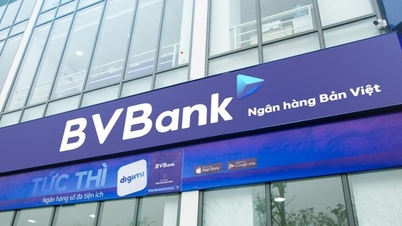

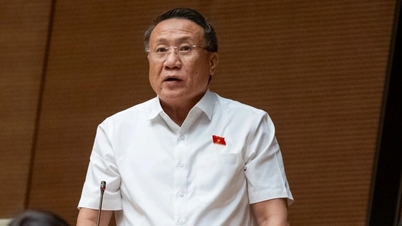






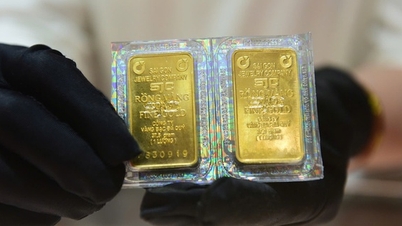
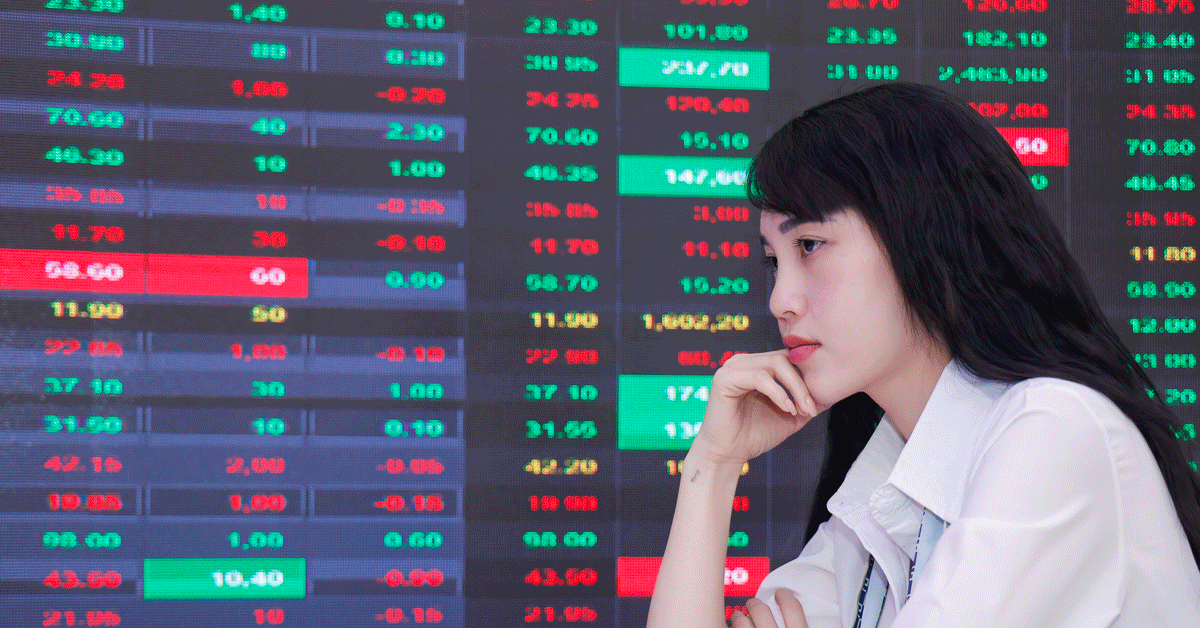

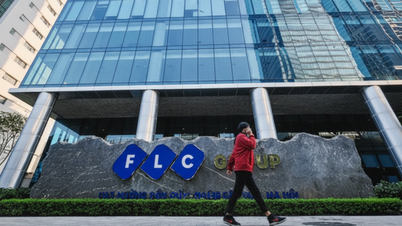

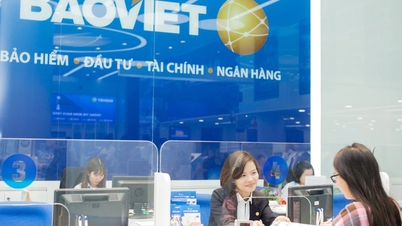

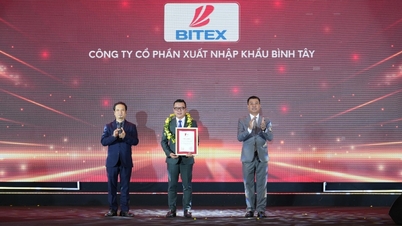







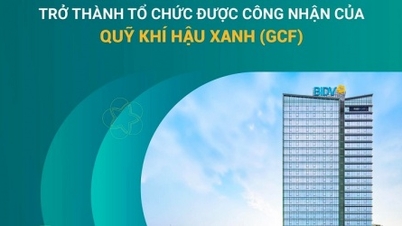
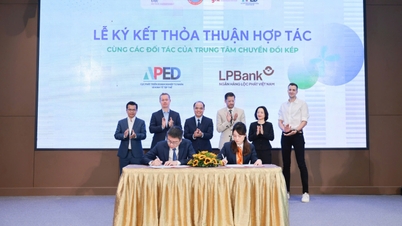
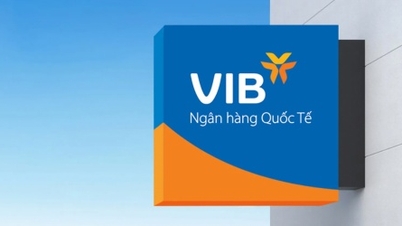










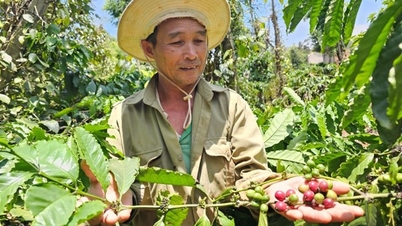









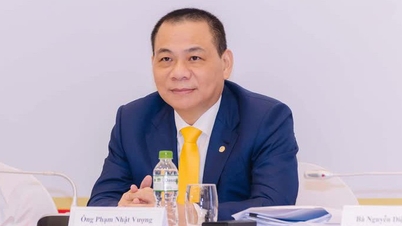
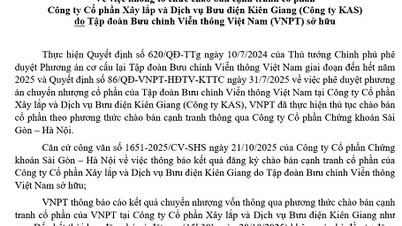


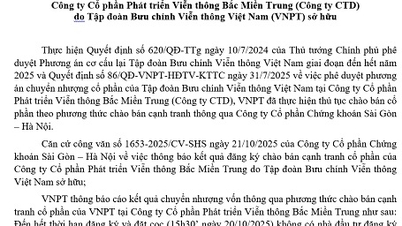
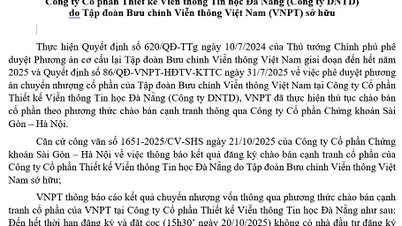








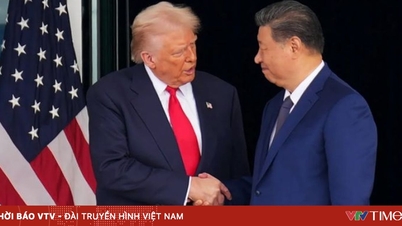


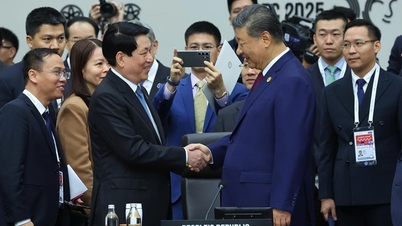

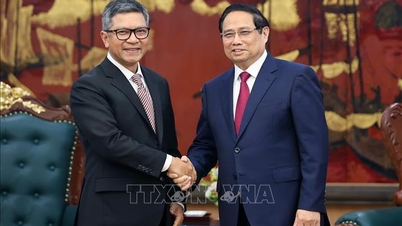



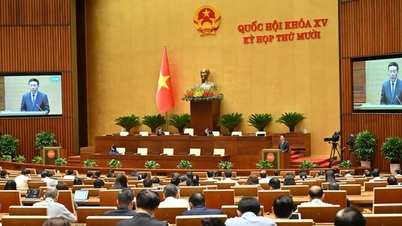

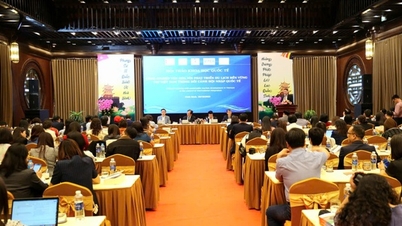
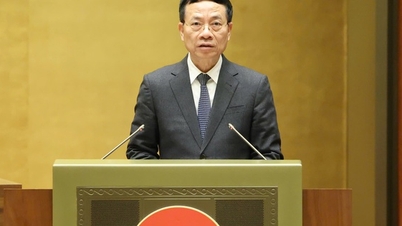
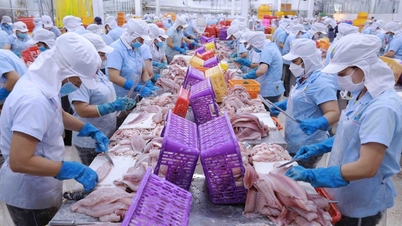



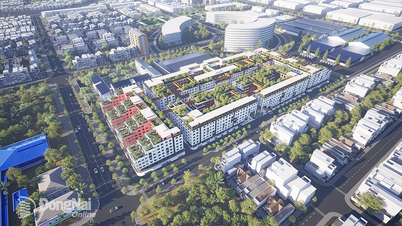


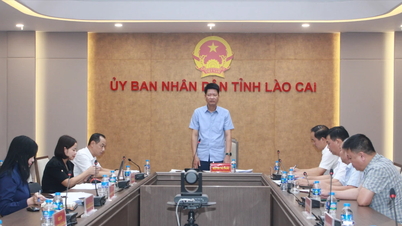

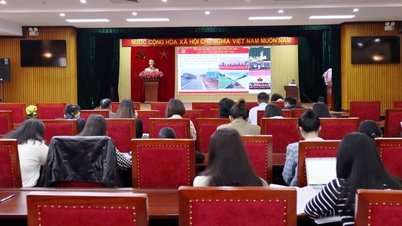













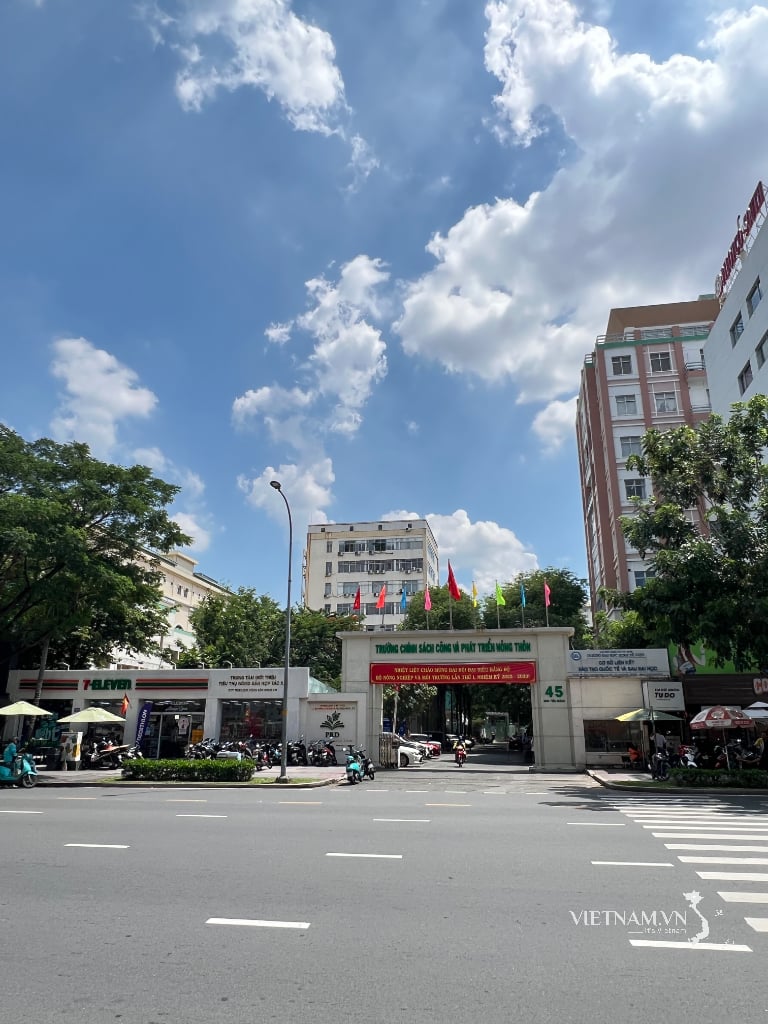


Comment (0)